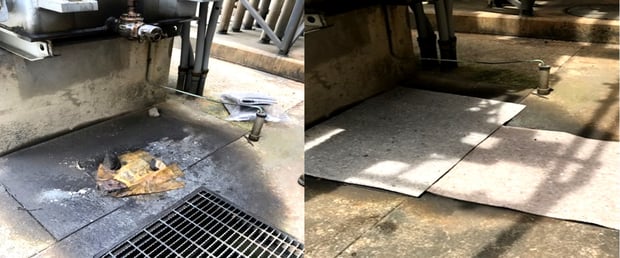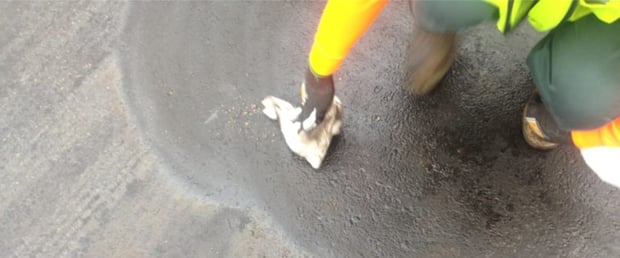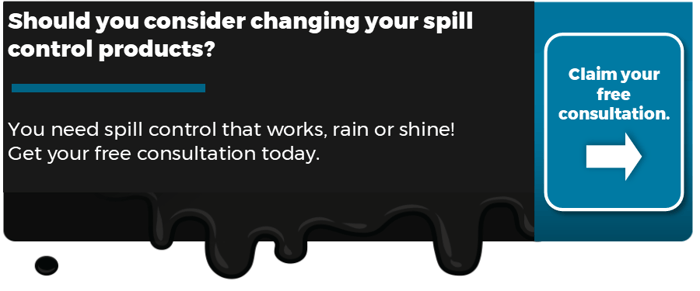An industry was on the brink of collapse.
It was a bitter cold February morning in 2015. Oil and natural gas prices were dropping and projected to fall to record lows. Industry veterans were in panic-mode. Several of our best customers were telling us to brace for the worst.
In the back of my mind I’m thinking this is a great opportunity for us. I had been through several major downturns since starting my first business in the early 1970s. One key to success had emerged.
I had learned that EVERY business began to look for ways to save money when the economy plunged. Not a big surprise, you say. And you are right.
An opportunity for discovery was looming.
But, therein lies the opportunity. If we could find ways to help customers save money as hard times unfolded, we could save our relationships with existing clients. More importantly, we could introduce our savings strategies to new prospective customers. As a result, we could win their business, too.
Over and over again, we undertook quests to become more efficient on behalf of the customer. The efforts to serve our customers guided us to new ways of doing business. At the end of the day, these adaptations actually increased our gross margins.
The net effect…..we always grew and profited during a downturn.
Dumpster diving taught us a lot along the way.
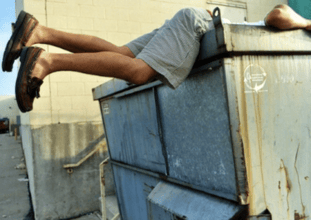 "Wait!" You are probably thinking, "Did he really just say dumpster diving?" Believe it or not I stand by that statement. Dumpster diving is not only a very humbling experience. It is also a learning experience.
"Wait!" You are probably thinking, "Did he really just say dumpster diving?" Believe it or not I stand by that statement. Dumpster diving is not only a very humbling experience. It is also a learning experience.Oil and natural gas prices continued to fall. We wanted to do anything we could to help our faithful customers during this time.
For our oil and natural gas customers, the answer was obvious. We needed to help them minimize inefficiencies and eliminate waste. Garbage cans at job sites were full of expensive, slightly-used items like:
-
Damp metacarpal gloves that had only been worn for a couple hours before tossing
-
Hundreds of white oil spill cleanup pads and socks that looked practically brand new
-
Barely-worn safety vests and even costly fire-resistant coveralls
So, we asked a key client for permission to perform “dumpster diving” to see if we could save them money. They immediately gave us the green light.

We found all sorts of "low-hanging fruit" in our dumpster diving exercise.
As you can see, we found half-used lubricant spray cans, slightly-dirty gloves, full rolls of duct tape and even unopened cases of bottled water. By the time we completed 35 dumpster dives, one group of products jumped to the top of the waste pile….white oil spill pads, pillows, socks and booms.
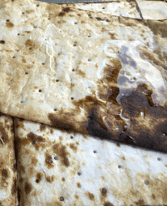
Our customer was tossing thousands of dollars of practically new products each month. Old-fashioned white oil spill materials were only operating at about 29% of their advertised oil cleanup capabilities. This was due to the wet conditions found on well pads. Essentially water forms a barrier on the outer surface of white spill materials. Consequently, oil was unable to penetrating into the spill materials.
We put our heads together to come up with specifications of the ideal replacement product. Our ideal product would:
-
Quickly absorb hydrocarbons in wet and dry weather.
-
Allow water to filter through (leaving the oil in the fibers).
-
Be made from 100% post-consumer waste.
-
Be squeezable to recover the hydrocarbons and be reused at least 10 times.
-
Be compactable and able to be stored in 400% less area on space-constrained well pads.
-
Reduce disposal waste costs by at least 300%.
-
Save our customer at least 70% in overall cost-to-use.
At the time, it seemed like a tall order, but our crew was up to the task. Within a few short weeks we created our first prototypes. The category was soon dubbed Spilltration® products. We then successfully tested the products with several of our key clients in the Marcellus Shale industry.
Unfortunately, natural gas prices were tumbling to unprecedented low prices. Shortly after we finished our beta testing, the Marcellus Shale drilling activities ended. Our target industry was waning faster than a knife fight in a phone booth.
A rocky transition ensued...
I have to admit, it was tough switching gears in 2015 and 2016. We had invested countless hours--and more money than I care to confess--cultivating strong relationships in the natural gas industry. Now, this industry was dead as a doornail. We had to downsize our team and literally start from scratch. Ouch.
Many of our industry friends had seen the other busts in the gas patch. They warned us to focus on other industries as quickly as we could. So, we asked our colleagues who served the natural gas industry what they planned to do.
Our pals in civil construction were focusing on roads, bridges and pipelines. Our environmental cleanup buddies turned their attention to utilities, refineries and transportation clients. Spilltration® was developed for the outdoors. So, we decided to ally with these associates still working in the outdoors.
But we got by with help from our friends.
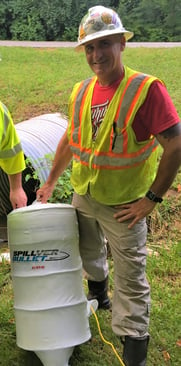 That's when our long-time friend, Tim Acri, from Environmental Management Specialists, came to the rescue. Tim took my business partner, Troy Beaver, under his wing. Tim invited Troy to bring our Spilltration® materials to a bunch of EMS jobs. They went on joint sales calls together. Then, in late 2015, Tim encouraged us to join the Spill Control Association of America.
That's when our long-time friend, Tim Acri, from Environmental Management Specialists, came to the rescue. Tim took my business partner, Troy Beaver, under his wing. Tim invited Troy to bring our Spilltration® materials to a bunch of EMS jobs. They went on joint sales calls together. Then, in late 2015, Tim encouraged us to join the Spill Control Association of America.Gradually, we began to uncover situations where Spilltration® products worked better than old-fashioned white oil spill materials. By the spring of 2016, we had identified a handful of prospective customers. These individuals wanted to do long-term tests on Spilltration® materials. The goal was to compare Spilltration® with the oil spill products they had been using in the outdoors for decades.
First, we asked these prospects what they did not like about white oil-spill pads, socks, pillows & booms. Listed below are their top complaints about the old white spill stuff.
For persistent outdoor oil drips and leaks professionals complained:
-
When it rained the oil would get “lifted” and runoff to unprotected areas
- Dripping oil quickly saturated white pads and spread across the ground beneath
- White pads had a tendency to blow around
- UV sunlight would turn the old white materials to dust in a matter of a few short weeks
- White spill products created too much waste
- All these problems caused excess labor to be expended
- They were concerned when they learned the white materials were made mostly from virgin polymers
- Budget pressures were forcing all customers to rethink every process
- When the customers complained to their distributors of white stuff, they offered no improvements

Are your spill control materials committing these seven deadly sins? Find out now.
For emergency outdoor spills professionals said:
-
Wet weather rendered old-fashioned white spill materials nearly useless in emergency conditions
- Oily runoff into storm sewers, streams, ponds and ditches was hard to control
- Old white products were bulky and took up precious space on their trucks and equipment
- Improvements in spill control deployment speeds were desperately needed
- Labor costs to clean up were high
- White spill materials were not reusable
- They were made mostly with unsustainable virgin polymers
- There weren’t any real oil spill control innovations in years and years

Effective cleanup of emergency spills with out-dated sorbents were nearly impossible in wet conditions.
The light at the end of the tunnel.
By the end of summer 2016 we had developed a dozen Spilltration® products and kits. We were ready to go to market.
The hard times were more difficult than I expected. But, we had an exciting, new direction. We had learned more than ever how to help our customers. We had discovered an amazing new spill control product line.
We were ready to dig in and help tackle the worst spill control problems to protect our great outdoors.
But we don't want you to take our word for it. Here's what our Spilltration® customers have been saying.
"As a spill-response professional, I’m always looking for ways to help our customers save time and money. As soon as we saw the SpillBoa barrier in action, we recommended it to all our clients to keep in their vehicles and equipment as a first line of defense. It deploys 40 times faster than traditional products and helps mitigate the impact of oil and fuel spills."-Tim Acri, COO, Environmental Management SpecialistsTraditional spill control methods (left) are no match against 100% recycled Spilltration® Husky Rugs and Husky Polyback Rugs (right)."Spilltration® products are the first true innovation that I have seen in two decades. They source their raw materials in an environmentally sound fashion, they know the holding capacity of their product, and if you use the poly-backed product you directly address the local and federal EPA’s primary concern; oil getting into the ground. Nobody else does that."
-Transmission C&M Area Manager, Major Electric Utility
Lewis Environmental crew wipes up an oil sheen from wet pavement using Spilltration® Oil Shammies.
“We have the distinct pleasure of working with HalenHardy regularly. Donny and his team are always on the cutting edge of product development in the environmental response industry. We maintain an inventory of Spilltration® products in all of our locations. The Husky Rugs and Oil Shammies have proven themselves on countless events. We specifically use Husky Rugs in areas where storm water poses a risk of increasing a spill’s foot print. Oil Shammies work great during the final phase of spill clean-up or for the smaller spills where only a sheen is present. I highly recommend utilizing HalenHardy’s mitigation products.”-Stephen Pelna, VP of Lewis Environmental
If you think that your spill control products aren't working hard enough for you, we'd be happy to provide you with a free consultation.
If you would like more information on Spilltration® Products or would like to know more about the people at HalenHardy®, contact us directly or leave a comment below!
